The Angelbird Wings PX1 M.2 Adapter Review: Do M.2 SSDs Need Heatsinks?
by Billy Tallis on December 21, 2015 8:00 AM ESTRandom Write
The random write test runs for a total of 18 minutes, starting with a queue depth of 1 and doubling QD every three minutes. The test is limited to a 16GB portion of the drive and only that portion is pre-filled with data, so this test doesn't reflect the steady-state behavior of a full drive. The main scores are based on the average of QD1, QD2 and QD4 results as larger queue depths are rare for client workloads. A more detailed breakdown is graphed further down the page.
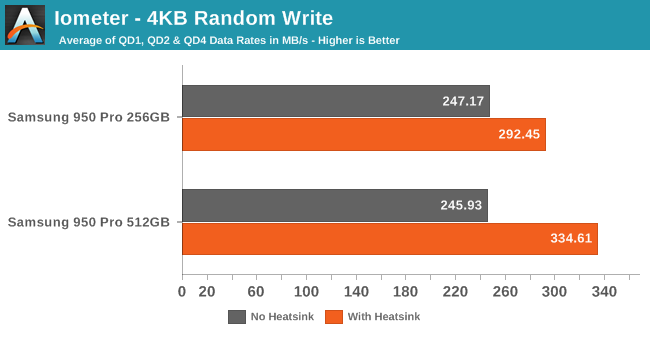
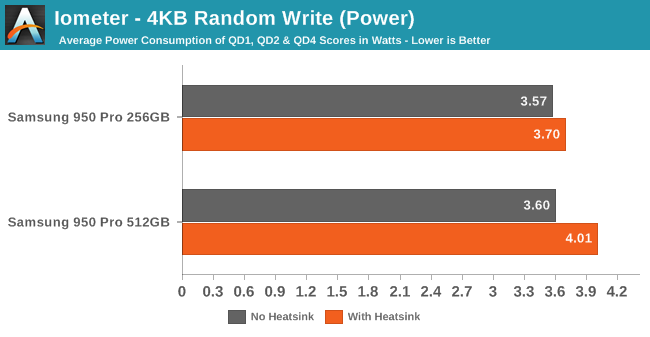
The heatsink allows the 950 Pro to reach significantly higher random write speeds, and enables the larger 512GB model to pull ahead of the 256GB model. Power comsumption increased slightly, but given the performance boost, efficiency is improved.
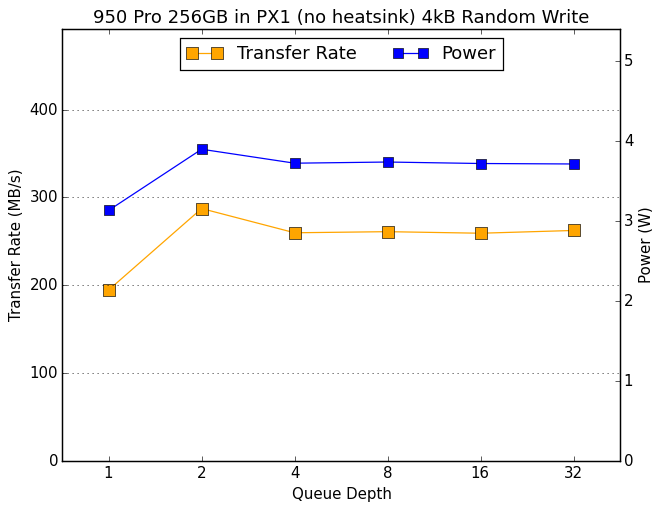 |
|||||||||
| 256GB no heatsink | 512GB no heatsink | ||||||||
| 256GB with heatsink | 512GB with heatsink | ||||||||
Without the heatsink, performance drops starting with a queue depth of 4, indicating that thermal throttling kicks in severely 6 to 9 minutes into the test. With the heatsink, we see that the 512GB model doesn't reach full performance until QD4.
Random Read
The timing and queue depth scaling for testing random reads are handled the same as for random writes, but reads are inherently faster and less power-hungry operations than writes for flash memory, so this is usually a less stressful test even when the drive's throughput is higher. The entire drive is filled before this test and the reads are not restricted to any portion of the drive.
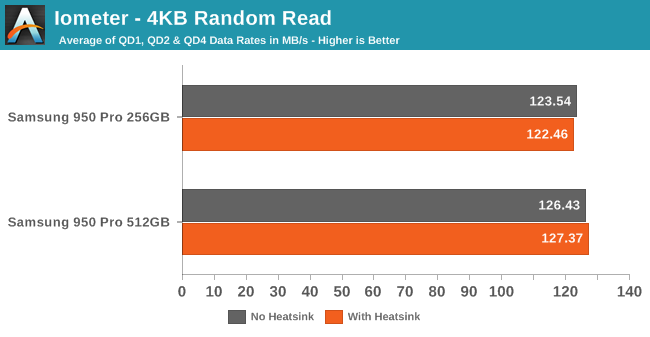
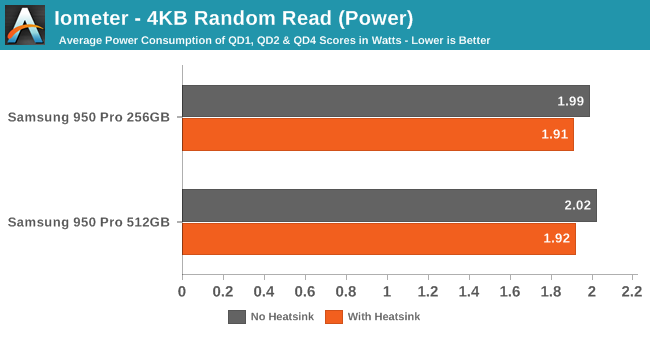
The performance for random reads is unaffected by the heatsink, but the lower operating temperature leads to less transistor leakage and thus slightly improved efficiency.
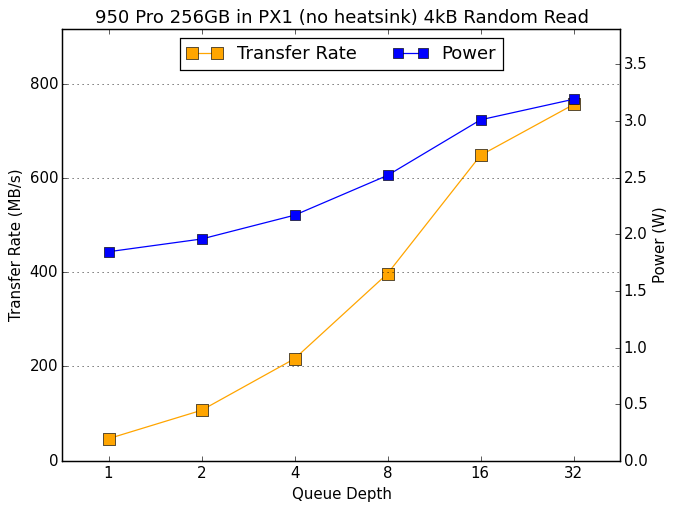 |
|||||||||
| 256GB no heatsink | 512GB no heatsink | ||||||||
| 256GB with heatsink | 512GB with heatsink | ||||||||
The heatsink produces no meaningful changes to the queue depth scaling behavior of random reads, further demonstrating that heat is not a problem for this test.










69 Comments
View All Comments
edzieba - Tuesday, December 22, 2015 - link
With most Skylake ITX boards having the m.2 slot on the back, it would be interesting to see how well a simple coupling of the drive to the motherboard backplate with an adhesive thermal pad compares to the bare drive (and/or to a dedicated PCIe slot heatsink like this). I suspect the relatively tiny power levels involved (barely over 5W at most) would mean a nice sheet of aluminium or steel would be more than enough heatsinking for even sustained heavy loads.zodiacfml - Tuesday, December 22, 2015 - link
Performance of these drives are awesome that I would never be able to throttle them even if I try. Regarding the form factor, I believe they have designed it really well. It might be too big in 5 to years from now.fvbounty - Tuesday, December 22, 2015 - link
Can you post some temps, I'm surprised you didn't have them in the review?kilgor270 - Friday, January 1, 2016 - link
Just installed my PX1 with a Samsung SM951 as my boot drive. The PX1 seems to be very well constructed in my opinion. Easy to put the SM951 chip in and then install into computer.The white LED's were a surprise. Since I'm not a gamer, to me the leds are just an indication that power is going to the board. I monitored the heat using a couple software apps and at first glance without stressing it, it is hovering around 90 degrees F. Performance r/w is right around 1450 MBs +/-Overall for a couple days testing, I am very very happy with this combination as a boot drive. Totally changed my overall system profile in a very positive way.
orencom - Thursday, January 7, 2016 - link
the real question is weather there are real use cases which utilize PCIe SSD bandwidth capabilities...Machou360 - Sunday, January 10, 2016 - link
Just bought two of these and in RAID0, they are a beast ! Made the same bentches and putting a raspberry heatsink on each of the M2 controller simply avoids any heat issue (had to remote part of the sticker for that, which was very easy) I would recommend these drives anytime, performance is superb!XmppTextingBloodsport - Saturday, March 19, 2016 - link
"Will thrashing air about be efficacious?""Should we really rely upon [haphazard] fans for cooling?"
jefflynn333 - Sunday, September 4, 2016 - link
I would like to see the Angelbird tested against just using small heat sinks attached to the 950. That seems like a logical alternative.